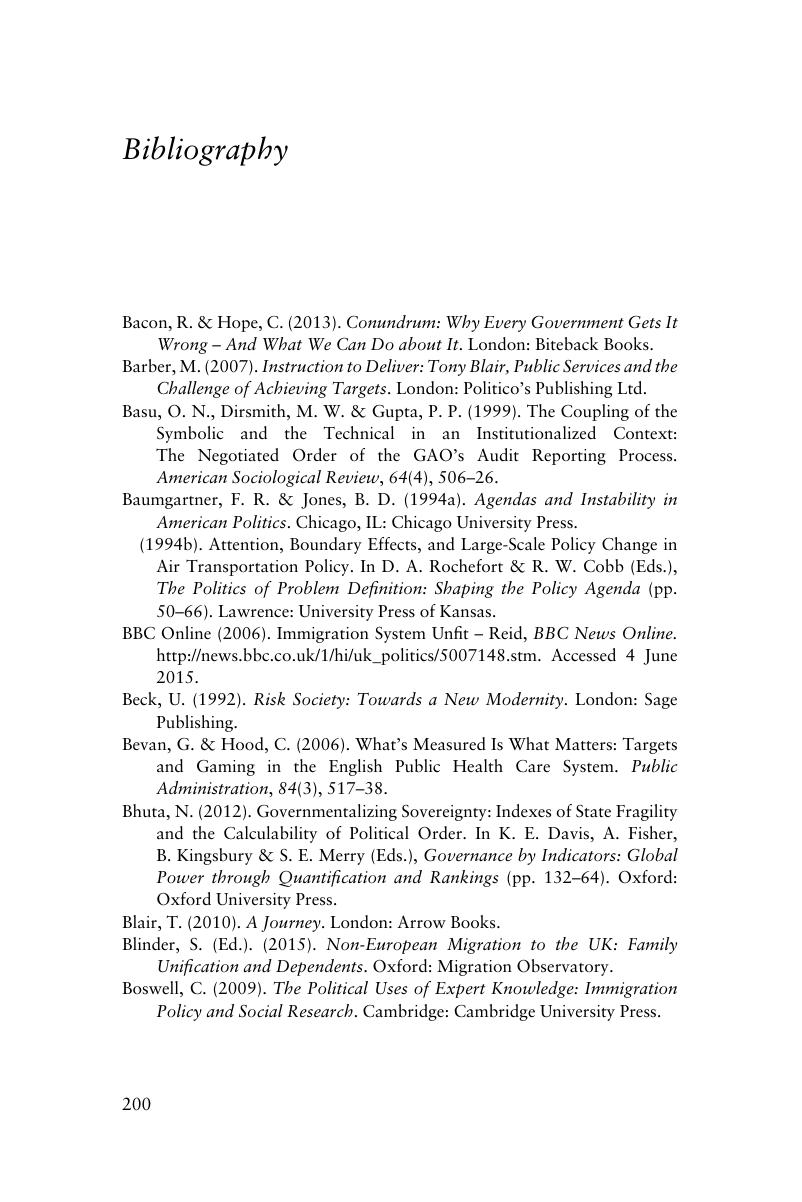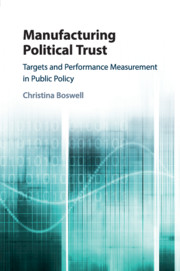Book contents
- Manufacturing Political Trust
- Manufacturing Political Trust
- Copyright page
- Contents
- Preface
- 1 Performance Measurement and the Production of Trust
- 2 The Problem of Political Trust
- 3 The Double Life of Targets
- 4 Monitoring Public Administration
- 5 Information and Trust
- 6 Political Credit and Public Trust in Targets
- 7 Targets and Issue Definition
- 8 After Performance Measurement?
- Bibliography
- Index
- References
Bibliography
Published online by Cambridge University Press: 19 February 2018
- Manufacturing Political Trust
- Manufacturing Political Trust
- Copyright page
- Contents
- Preface
- 1 Performance Measurement and the Production of Trust
- 2 The Problem of Political Trust
- 3 The Double Life of Targets
- 4 Monitoring Public Administration
- 5 Information and Trust
- 6 Political Credit and Public Trust in Targets
- 7 Targets and Issue Definition
- 8 After Performance Measurement?
- Bibliography
- Index
- References
Summary

- Type
- Chapter
- Information
- Manufacturing Political TrustTargets and Performance Management in Public Policy, pp. 200 - 214Publisher: Cambridge University PressPrint publication year: 2018



